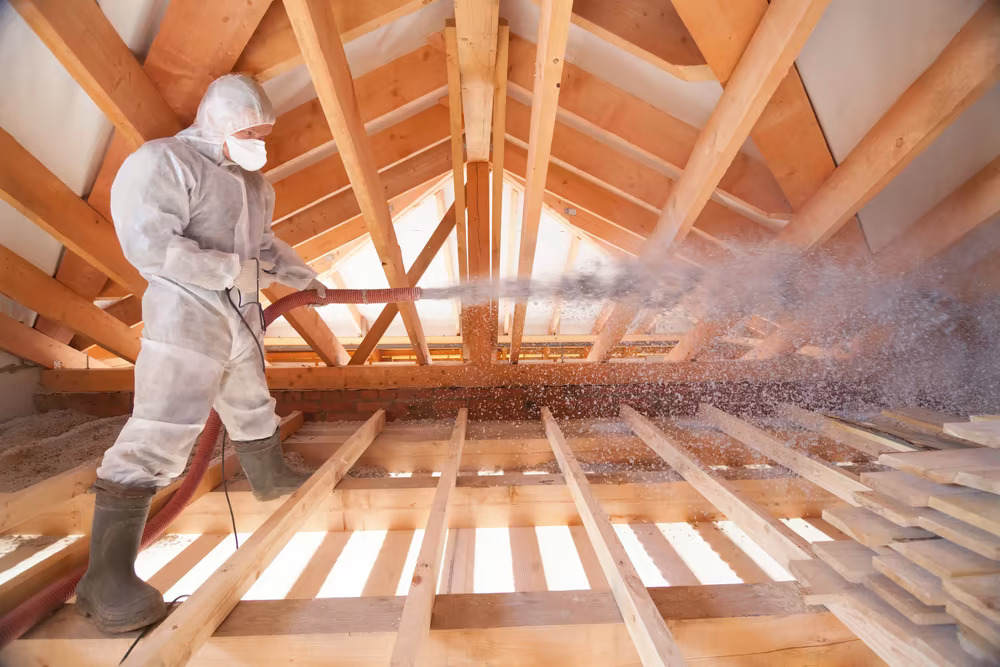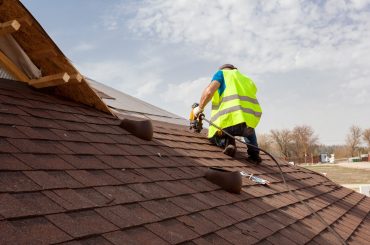Table of Contents
Insulation is an essential part of any home, as it helps to keep the temperature inside comfortable while reducing energy costs. Blown-in insulation, or loose-fill insulation, is a popular choice for many homeowners due to its affordability and effectiveness in helping reduce heat loss.
This article will discuss what factors should be taken into consideration when determining the right amount of blown-in insulation for your home.
What is a Blown-in Insulation?
Blown-in insulation is made up of either cellulose or fiberglass material and is installed by an experienced technician using special equipment. It is designed to fill crevices, cracks, cavities, and other areas that may be difficult to insulate with other materials. Blown-in insulation also helps reduce noise from indoor and outside sources.
How Much Blown-in Insulation Does a House Need?
The amount of blown-in insulation needed for your home depends on several factors, including the size and shape of your home, climate or geographic location, type of heating and cooling systems used, and existing insulation levels. Generally speaking, older homes require more insulation than newly built homes.
#1. Size and Shape of your Home
The size and shape of your home impact how much insulation is needed to protect it from the elements. For example, larger houses may require more insulation than smaller homes in order to maintain a comfortable temperature throughout the entire space.
Additionally, homes that have irregular shapes or multiple levels may also require additional insulation for various areas.
#2. The Climate
The climate of an area has a direct impact on how much insulation is required for a home. Areas that experience cold winters and hot summers will benefit from more insulation than those with milder temperatures year-round. In addition, colder regions may need thicker layers of insulation to help prevent heat loss.
#3. Geographic Location
Geographic location plays an essential role in determining how much insulation is needed for a home. Areas that experience extreme temperatures, such as areas prone to extremely cold winters or scorching summer heat, require more insulation and thicker layers than areas with more moderate climates.
Also, coastal homes may need specialized insulation to protect against moisture damage due to humidity.
#4. Heating and Cooling System
The type of heating and cooling system used in a home also affects the amount of insulation needed. Homes with air conditioners or oil-fired heaters require more insulation than homes with electric heat pumps since these systems tend to lose more heat.
Furthermore, homes that use gas furnaces should be insulated with thicker layers of blown-in insulation to help reduce energy costs.
#5. Existing Insulation Levels
The recommended R-value for blown-in insulation in the US is between R-13 and R-38, depending on the geographic location and climate. To ensure optimal performance, using the correct amount of insulation according to these recommendations is essential.
Furthermore, inspecting your home annually for air leakage and drafts requiring additional insulation is vital.
In order to determine the correct amount of blown-in insulation needed for a home, you can reach out to certified specialists at iFOAM for a free consulation.
Where to Install Blown-in Insulation
#1. Attics
Attics are the most common places to install blown-in insulation. It is essential to insulate attic floors and walls, as well as any openings in the living space below. Blown-in insulation should be installed in between joists, beams, rafters, and other structural elements in order to create a sealed, airtight barrier.
#2. Exterior Walls
Blown-in insulation can also be installed in exterior walls of homes, such as those made of concrete or cinderblock. This is usually done using an insulation gun to inject the material into wall cavities and around electrical wiring and other sensitive areas.
#3. Crawl Spaces
Crawl spaces are often overlooked when it comes to insulation, but they can be a significant source of heat loss if left uninsulated. Blown-in insulation should be installed on the floors and walls of crawl spaces in order to create an airtight seal against cold air infiltration.
#4. Basements
Basement walls and floors can also benefit from additional insulation. Blown-in insulation should be installed on the exterior of the basement wall and between joists to create a barrier against cold drafts and moisture infiltration.
#5. Garage
Garages are often the least insulated area in a home and may benefit from additional insulation. Blown-in insulation should be installed along walls, ceilings, and floors to prevent heat from leaking into the garage during winter.
Final Thoughts
Blown-in insulation is one of the most effective ways to reduce energy costs and create a comfortable living environment, as it helps to create an airtight seal around a home.
With a properly insulated home, homeowners can enjoy lower energy bills while creating improved indoor air quality and comfort. In order to determine the correct amount of blown-in insulation for a home, factors such as geographic location, climate, type of heating system, and existing insulation levels should be taken into account.





